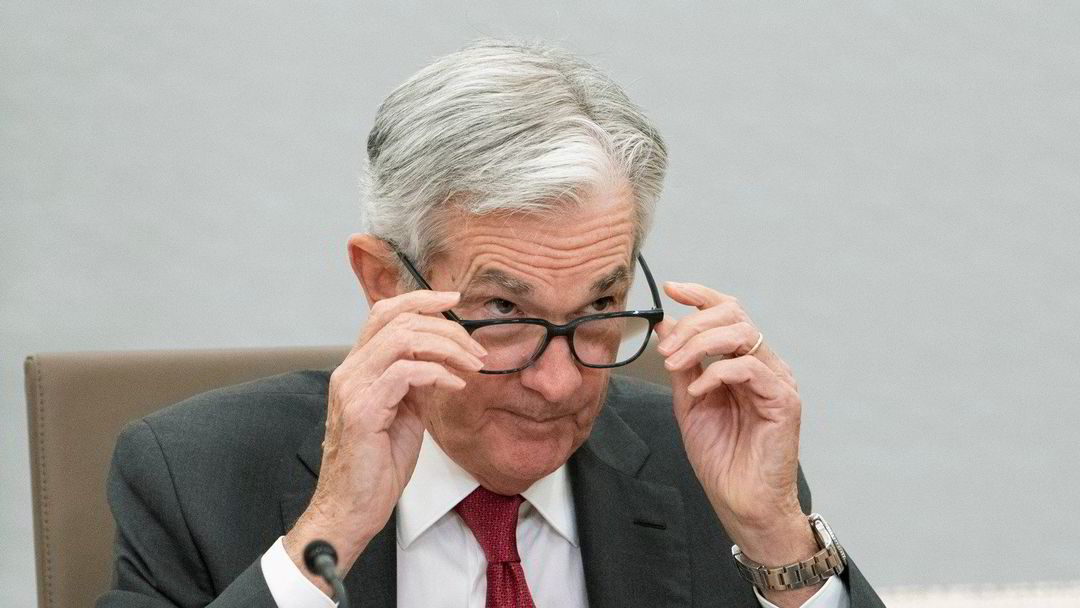The US PCE, often referred to as the Federal Reserve’s preferred measure of price inflation, rose 6.2% year-on-year in August, according to Bloomberg. In advance, it was expected to rise 6.0 percent.
Core personal consumption expenditures, which exclude food and energy goods, rose 4.9 percent year-on-year in August, while an increase of 4.7 percent was previously expected.
Inflation numbers that were greater than expected up front have had the effect of dragging down stock markets in recent months. This was also the case on Friday, although stocks were pointing higher for a few hours.
At the end of the stock exchange, the conclusion was as follows:
- The broad S&P 500 index fell 1.5 percent.
- The Dow Jones Industrial Average fell 1.7 percent.
- The Nasdaq technology stock index fell 1.5 per cent.
For September as a whole, the same indicators have developed as follows:
- The S&P 500 fell 9.3 percent
- The Dow Jones fell 8.8 percent
- The Nasdaq fell 10.5 percent
to me Reuters This means that the S&P 500 has left behind its biggest month of September since the 2008 financial crisis. The S&P 500 has also reached its lowest level so far this year. The weak September comes only as an extension of what has been a difficult year for the US stock market.
To date, the most central indicators have fallen sharply:
- The S&P 500 fell 24.7 percent
- The Dow Jones Industrial Average fell 20.9 percent
- The Nasdaq fell 32.4 percent
Heavy Nike Drop
Among the stocks that stood out on Friday was Nike, with its price down 12.8 percent. The price drop came on the heels of the company’s latest quarterly report revealing shrinking margins for the apparel giant.
The company reports rising freight and logistics costs, currency changes, not least the downward-adjusted prices of “liquidating excess inventory”, that is, selling the entire inventory.
Meanwhile, the company’s revenue increased four percent in the first quarter compared to the same period last year, or a “currency-neutral” 10 percent. However, the after-tax result was down 22% from last year, to $1.5 billion.
Heavy dead year in the stock market
The stock market close on Friday marked the end of trading in both September and the third quarter of the year, and for Mark Zuckerberg’s Meta, this was the third consecutive quarter with double-digit prices.
The company’s market capitalization was just $1,000 billion a year ago, but now two-thirds of that amount is gone now, he writes CNBC. Only four other companies on the S&P500 index have 2022 heavier than Meta.
For the company, which used to experience solid growth every year, 2022 presented a decline in user numbers and a decline in advertising revenue. At the same time, the investment in the Meta-verse cost billions of dollars while at the same time it did not generate any income for the company.
“I’m not sure if there are any remaining core businesses operating at Facebook,” Laura Martin, an analyst at Needham tells CNBC. It issued a sell recommendation for the stock, albeit the only one out of 45 analysts tracked by FactSet.
The company remains solidly in the red — even though the company’s net income declined 36 percent last quarter compared to the same period last year, the company finished with a profit of $6.7 billion. On Friday, the share price fell 0.5%.
Double-digit price growth in the eurozone
Earlier on Friday, the new figures showed strong price growth in the euro zone. The consumer price index for euro countries rose by as much as 10 percent on an annual basis in September. This is the first time that inflation has been in the double digits.
The September survey is the second consecutive standard reading, after one Price growth of 9.1 percent in August.
Core inflation hit 4.8 percent in September, and the European Central Bank now faces further price hikes ahead of its next interest rate meeting in October. In the market, another rate hike of 0.75 percent is expected, writes Bloomberg.
In advance, economists forecast overall inflation of 9.7 percent, and core inflation of 4.7 percent.
The next step should be big, because we are still far from rational interest rates with the 2% inflation target. European Central Bank member Martins Kazak said on Wednesday I would support a 0.75 percentage point increase.
In the wake of record inflation measures, however, several Central European indices rose.
The Frankfurt DAX, the most centralized index of the German stock market, rose 1.2 percent on Friday, while the Euronext 100 index, which reflects the performance of the top 100 companies in France, Portugal, Belgium, the Netherlands and Luxembourg, rose equally.
By comparison, London’s FTSE 100 rose 0.2% on Friday.
Heavy rain on Thursday
On Thursday, the stock market fell sharply in the United States, with the broad S&P 500 index dropping more than 2% to its lowest level in 2022. The worst was for the tech-heavy Nasdaq, which is down four percent. parts of the day, and it’s down about three percent.
The intense turmoil of the past few days does not appear to have taken a break on Friday. An hour before the opening of the stock exchanges, the three central indexes were scheduled to rise slightly, but when the inflation figures became known and as the opening day of the stock exchange approached, fears prevailed.
Investors who were most active in the last half hour of pre-trading will send the Dow Jones, S&P 500 and Nasdaq indices lower. Then stock trading in the US also opened with a weak but broad decline.
Big jumps in interest rates
Last week, the US central bank raised its key interest rate by 0.75 percentage points for the third time in a row – and a string of Federal Reserve statements this week have done their part to remove any doubt that the Fed will continue to tighten. Inflation must remain high.
For example, the Federal Reserve’s deputy governor warned on Friday afternoon against pulling out of the inflation battle too early:
Monetary policy should be constrained for a period of time to ensure that inflation moves downward towards the target. Because of this, we are committed to avoiding pulling out too soon, Lyle Brainard said in a speech in New York, according to CNBC.
The vast majority of experts are also clear that the interest rate must rise further after the fall in order to control inflation, a tight labor market and strong wage growth.
– DNB Chief Economist Knut Magnussen told DN last week that future rate hikes will continue to be largely dominated by data, especially the development of inflation. (Conditions)Copyright Dagens Næringsliv AS and/or our suppliers. We would like you to share our cases using links that lead directly to our pages. All or part of the Content may not be copied or otherwise used with written permission or as permitted by law. For additional terms look here.

“Explorer. Unapologetic entrepreneur. Alcohol fanatic. Certified writer. Wannabe tv evangelist. Twitter fanatic. Student. Web scholar. Travel buff.”




